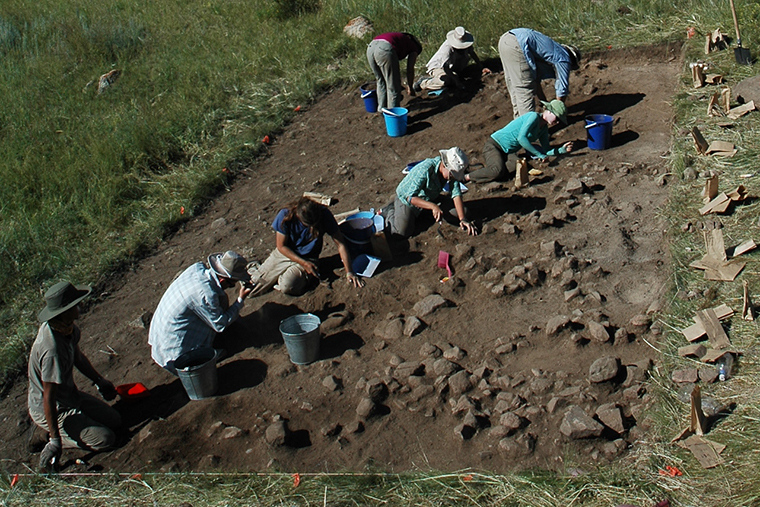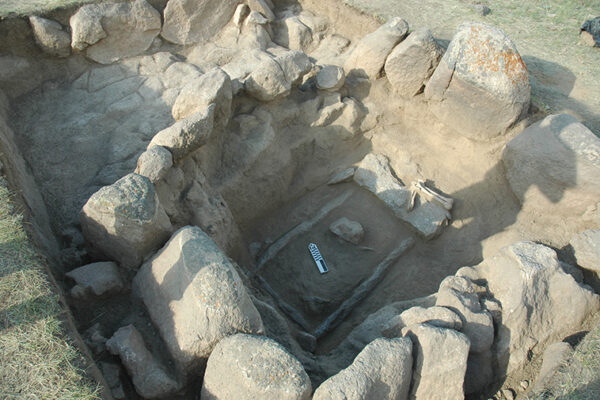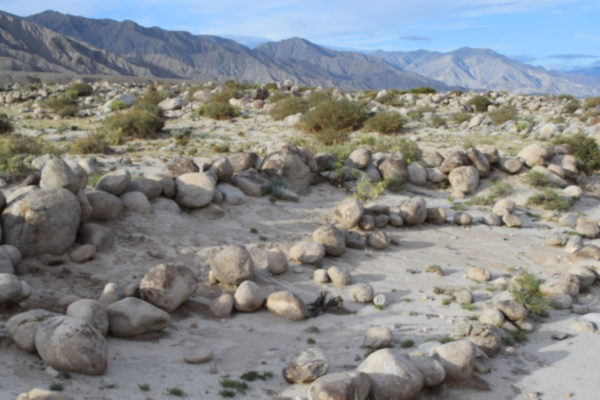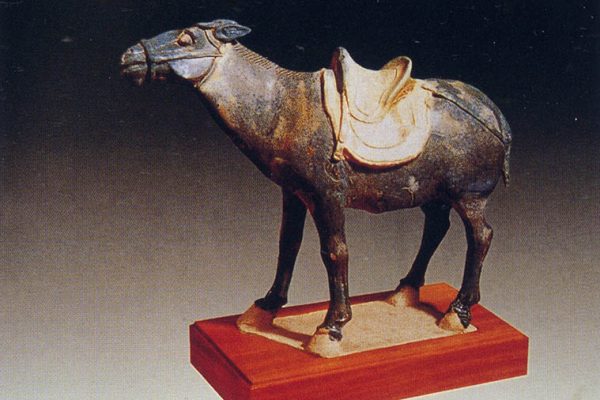Fueled by technological advancements, ancient DNA research has grown by leaps and bounds over the last decade. From the first full ancient genome published in 2010 to the more than 4,000 analyzed today, the DNA collected from ancient human remains has advanced researchers’ understanding of the origins and history of human populations around the world.
However, given the relative infancy of the field and its rapid development, researchers find themselves in a position where they are building the plane while flying, figuratively speaking.

“There are very serious ethical implications to dealing with human remains. These samples are taken from humans who had lives, families, and whose bodies represent the ancestral history of people still living today,” said Michael Frachetti, professor of archaeology in Arts & Sciences at Washington University in St. Louis who has used ancient DNA research to study Central and Eastern Eurasia populations.
“Anthropologists, geneticists, biologists and other researchers have a responsibility to engage in detailed and thoughtful conversations about the ethics of using human remains and to agree on guidelines that might anticipate potentially unforeseen issues that cause direct harm to descendant communities we work with throughout our research,” Frachetti said.
Recently, he was one of 64 scholars from 31 countries who collaborated to develop a set of globally applicable best practices for sampling human remains and carrying out scientific analysis. The guidelines were published Oct. 20 in the journal Nature.
According to Frachetti, the guidelines established by the group provide a framework for conducting ethical DNA research that considers complex and sometimes divergent concerns among global communities and researchers, including academic and nonacademic stakeholders. The guidelines include:
- Abide by all regulations in the places where they work and from which the human remains originate;
- Prepare a detailed plan prior to beginning any study;
- Minimize damage to human remains;
- Ensure data are made available following publication to allow critical re-examination of scientific findings; and
- Engage with other stakeholders and ensure respect and sensitivity to stakeholder perspectives.
Below, Frachetti discusses the process of working with diverse scholars around the world and how this type of collaboration — which crosses regional, disciplinary and identity boundaries — contributes positively to the future of scholarly work.
How did this global collaboration transpire?
The international gathering was hosted by the Reich Lab at Harvard University. David Reich is an accomplished geneticist who, in the last 10 years, has emerged as one of the most prolific, yet sometimes criticized, voices for applying genomic research to ancient populations. His state-of-the-art laboratory has become an epicenter for the combination of archaeology and genetics and has a vast global network of scholars working on a wide range of questions.
The Reich lab called together an informal meeting among global colleagues, firstly to listen to different views on ethics and open a forum to express what each saw as critical or relevant to their own national or Indigenous communities. The aim at the start was just an open discussion, but the spectrum of global input was extremely eye opening. The invitation was open to anyone engaged in this type of work, but started among colleagues. Due to the COVID pandemic, the meeting was held virtually through Zoom.
What made this collaboration unique? How did this shape the team’s work?
There were already a host of articles and statements — primarily from a North American perspective — which articulated the complex and important ethical issues surrounding DNA research. These articles, many of which were written by Indigenous scholars, were the gateway for this international conversation. But the views and insights of the diverse participants in our meeting showed that the starting point for ethics in DNA differs widely across the world. This is especially true when considering the different colonial and post-colonial histories of global communities. The important ethical concerns that might be central for say, Indigenous communities in North America, might be less of an issue in countries without similar histories.
The voices of other global participants brought different issues to the surface. Hearing 60 or more people with decades of practical work in this field — including Indigenous communities, academics, museum curators and others — illustrated that a baseline for ethical practice had not yet been adopted in many regions or was quite different in some parts of the world.
Scholars from different disciplines around the world expressed what they saw as the important elements of a globally relevant, ethical approach to genetics sampling. This wasn’t just a feel-good meeting. Hard topics emerged and we were communicating across cultural, social and ethnic boundaries in real and equitable ways.
Because the meeting was held virtually, participants had to take turns speaking, which created the opportunity for more conversational consensus. To the credit of everyone who participated, nobody was there to forward a personal agenda. Everybody recognized that they had some expertise to contribute to the conversation, but they were also there to listen and learn.
Ultimately, everyone is working toward the most productive endgame, which is doing research that is first and foremost considerate of the power of human ancestry, which allows for people’s voices to be heard, and is done in a way that does not cause conflict or harm.
I think we were able to distill general practices that could be applied — if locally considered and augmented in necessary ways — anywhere in the world.
Ultimately, our goal for these guidelines is producing better science, better social responsibility and more responsible results.
Michael Frachetti
How will these guidelines impact future ancient DNA research?
There were already a host of articles and statements — primarily from a North American perspective — which articulated the complex and important ethical issues surrounding DNA research. These articles, many of which were written by Indigenous scholars, were the gateway for this international conversation. But the views and insights of the diverse participants in our meeting showed that the starting point for ethics in DNA differs widely across the world. This is especially true when considering the different colonial and post-colonial histories of global communities. The important ethical concerns that might be central for say, Indigenous communities in North America, might be less of an issue in countries without similar histories.
The voices of other global participants brought different issues to the surface. Hearing 60 or more people with decades of practical work in this field — including Indigenous communities, academics, museum curators and others — illustrated that a baseline for ethical practice had not yet been adopted in many regions or was quite different in some parts of the world.
Scholars from different disciplines around the world expressed what they saw as the important elements of a globally relevant, ethical approach to genetics sampling. This wasn’t just a feel-good meeting. Hard topics emerged and we were communicating across cultural, social and ethnic boundaries in real and equitable ways.
Because the meeting was held virtually, participants had to take turns speaking, which created the opportunity for more conversational consensus. To the credit of everyone who participated, nobody was there to forward a personal agenda. Everybody recognized that they had some expertise to contribute to the conversation, but they were also there to listen and learn.
Ultimately, everyone is working toward the most productive endgame, which is doing research that is first and foremost considerate of the power of human ancestry, which allows for people’s voices to be heard, and is done in a way that does not cause conflict or harm.
I think we were able to distill general practices that could be applied — if locally considered and augmented in necessary ways — anywhere in the world.
How will these guidelines impact future ancient DNA research?
This article has been translated into more than 20 languages, so the hope is that people around the world can participate in this conversation in impactful ways. Ultimately, our goal for these guidelines is producing better science, better social responsibility and better dialogue among global communications.
What we’ve seen in the past is that unforeseen consequences can occur from DNA research. The guidelines give researchers a starting protocol to avoid common pitfalls.
India is a really great example of this. The diversity of the Indian population — its history, its regional mosaic and cultural background — is so inherently complex that if you don’t engage carefully and different constituencies are unable to weigh in prior to beginning research, research can have serious social and political implications.
Engaging the communities with whom you’re working is one of the primary principles outlined in the guidelines. The ideal is that there’s a multiscalar engagement and conversation, in which the concerns or issues that are relevant to a range of stakeholders can serve as the driving force behind collaborative research.
Another important aspect of the guidelines is transparency and open access to data, which allows the opportunity for other experts to weigh in. The guidelines make sure you’re meeting the benchmarks that you promised, like sharing results with partner communities, and providing stable scientific archives of the data. This demands that scholars consult with relevant Indigenous communities before designing the sampling, the goal being establishing a common mission and goal for the research. Sometimes this means the work won’t be done — and that is also an acceptable outcome of these conversations.
Ultimately, our goal for these guidelines is producing better science, better social responsibility and more responsible results. No scientific program is ever going to be perfect — there will always be a need to revise and make modifications — but we should endeavor to sustain human rights and do no harm in our approach to science.
Why was it important for you and WashU to have a seat at the table?
WashU is a major player in so many of these conversations. Our anthropology department is internationally respected, and this rests in part on the individual ethical engagements by our faculty and students. Beyond archaeology and genetics, our department has excellence in global health, primatology and human evolution, domestication sciences and ancient populations here in St. Louis and throughout the Mississippi Valley. As such, we are a part of a wide global community that extends across these regions.
What advice do you have for your WashU colleagues who want to engage in this type of work?
I believe this type of global, collaborative work will become increasingly common across disciplines, if it’s not already, because we now have technologies that truly bridge national boundaries in a more inclusive way.
If these types of conversation have not occurred in your field, they likely will in the future. This type of collaboration is beneficial not only in disciplines that deal with contemporary societies, but in any discipline, business or interaction that links local and global communities to serve humanity in positive ways.
From the formation of institutional codes, guidelines and ethical approaches, inclusive participation helps societies recognize and avoid the pitfalls of the past. What was most exciting to me about this experience is that over 60 scholars from various disciplines and countries shaped a collective voice that initiates dialogue around these guidelines.



